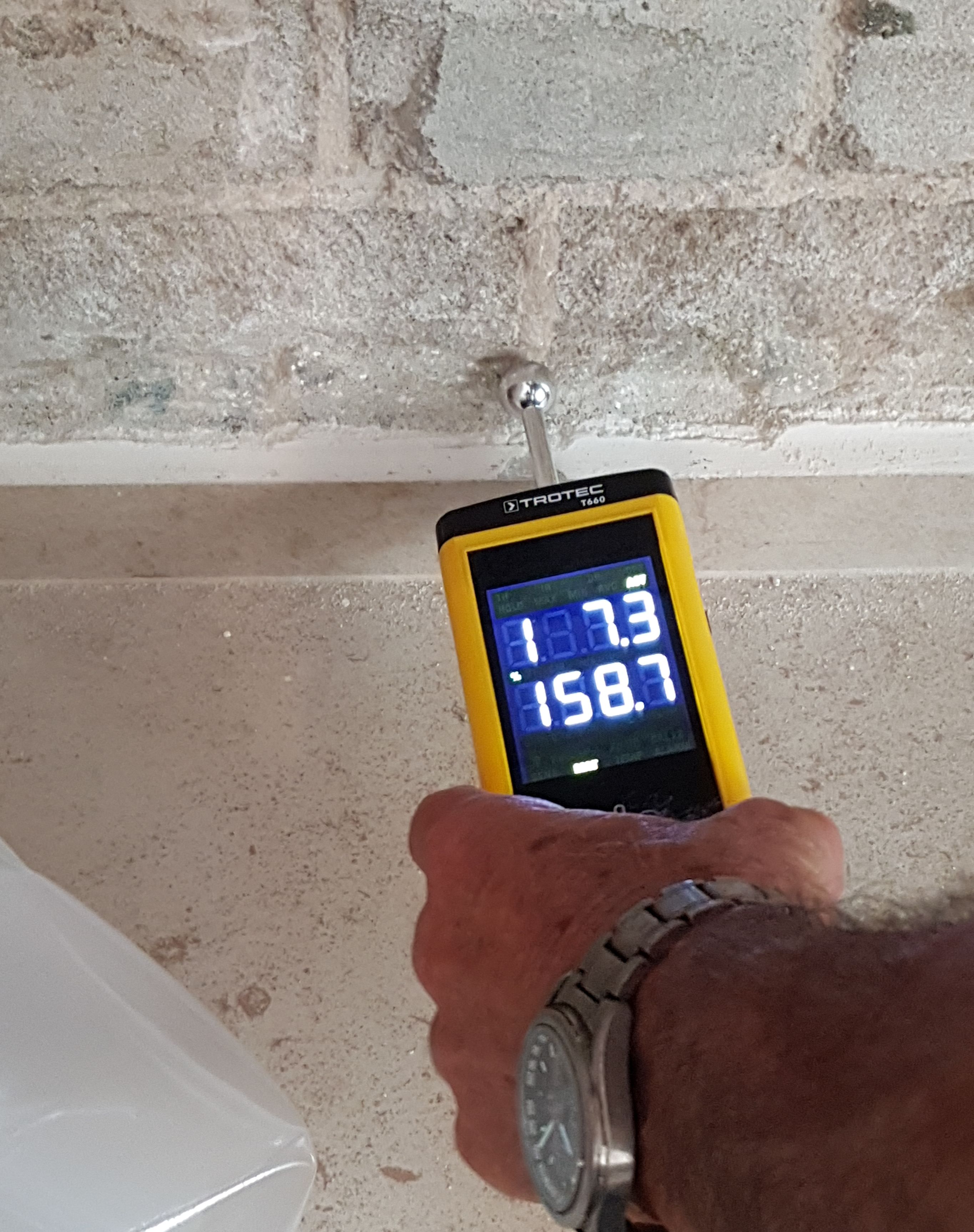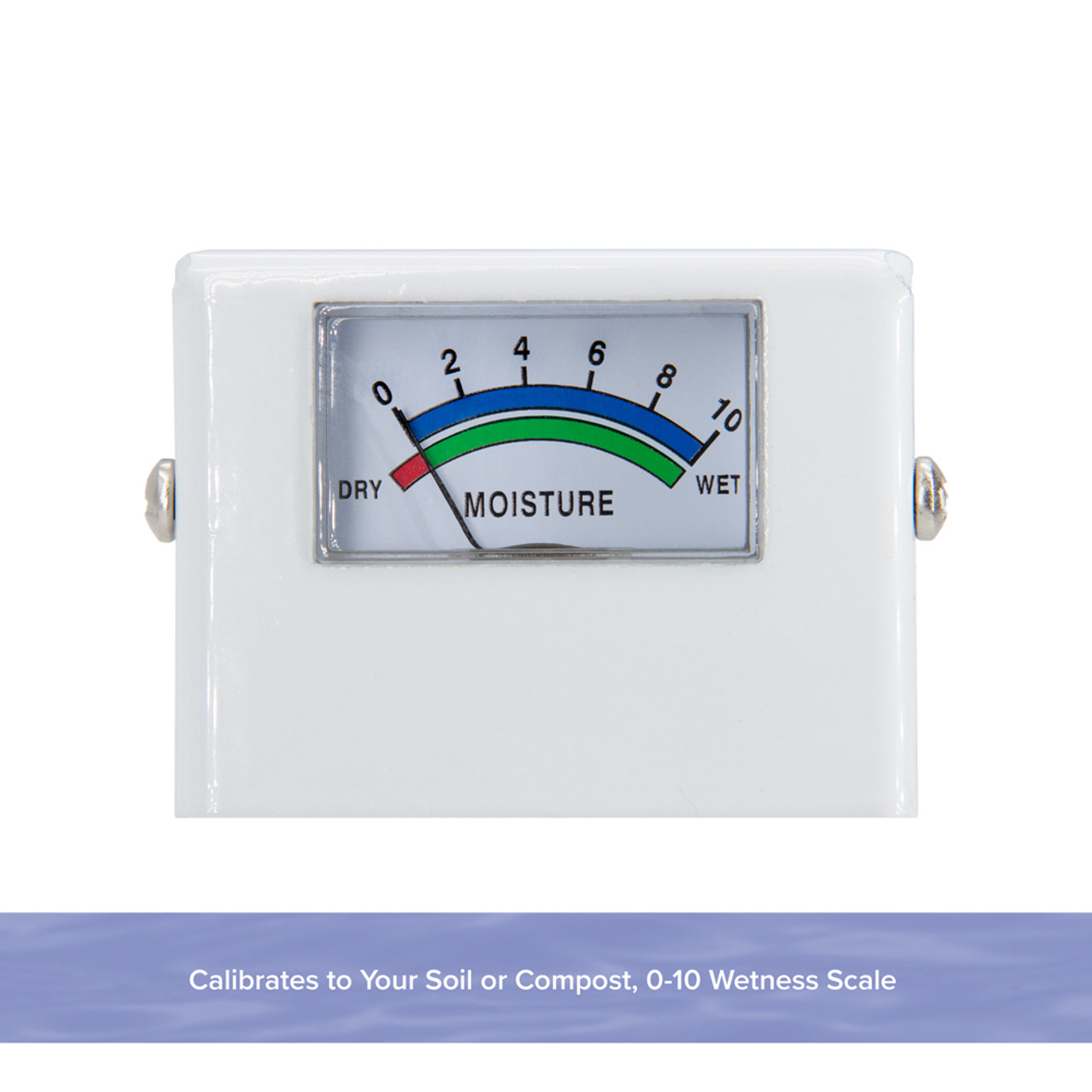Exactly How a Moisture Meter Can Improve Your Construction Tasks and Stop Damage
Exactly How a Moisture Meter Can Improve Your Construction Tasks and Stop Damage
Blog Article
Delve Into the World of Wetness Meters: Whatever You Required to Know
In the world of moisture meters lies a world of precision and practicality that usually goes unnoticed. Comprehending exactly how moisture meters run, the various types offered, and their diverse usages can drop light on their significance in ensuring top quality and performance.
Exactly How Dampness Meters Work
Dampness meters operate by determining the electrical conductivity or capacitance of products to establish the moisture web content existing - Moisture Meter. These meters are important tools across different industries, consisting of building and construction, woodworking, and farming. By utilizing different techniques such as pinless or pin-type innovation, dampness meters supply precise analyses that assist experts make informed choices
Pin-type wetness meters work by inserting the sharp pins right into the product being checked. On the various other hand, pinless dampness meters utilize electromagnetic signals to check a larger area without triggering any damage to the material's surface area.
Despite the method utilized, moisture meters play an important role in preventing issues such as mold and mildew development, structural damage, or item flaws triggered by excess dampness. Comprehending exactly how these meters work is crucial for making certain the quality and integrity of materials in different applications.
Kinds Of Dampness Meters
Offered the critical function wetness meters play in numerous markets, it is necessary to understand the various kinds offered to professionals for accurately evaluating wetness levels. There are mainly two primary sorts of dampness meters: pin-type and pinless moisture meters.
Pin-type moisture meters utilize 2 pins that are put right into the material being evaluated to determine the electrical resistance between them. This method is typically utilized for timber, drywall, and other structure products. Pin-type meters give precise readings at particular midsts, making them ideal for determining dampness gradients.
On the various other hand, pinless wetness meters make use of electro-magnetic sensing unit plates to scan a bigger area of the material without creating any kind of damage. This type is ideal for rapidly scanning huge areas and is generally made use of for floor covering, walls, and ceilings. Pinless meters are convenient for taking readings on completed surfaces without leaving any kind of noticeable marks.
Both kinds of dampness meters have their benefits and are chosen based on the specific demands of the job at hand. Comprehending the differences in between these types is essential for experts to make accurate dampness assessments.
Applications Throughout Industries
With diverse capabilities, moisture meters discover prevalent application across various markets, helping experts in guaranteeing optimum problems for structures and products. In the farming market, dampness meters are indispensable for establishing the dampness material in grains, seeds, and hay, making sure quality assurance and avoiding mold and mildew growth. Building and construction professionals rely on moisture meters to examine the moisture degrees in building materials like wood, concrete, and drywall, which is critical for preserving architectural stability and avoiding concerns like rot or mold and mildew. The flooring market uses moisture meters to determine the wetness web content in subfloors before setting up numerous flooring, stopping expensive damages as a result of excess dampness. In the food sector, wetness meters are made use of to keep an eye on and control moisture degrees in items such as grains, nuts, and dried fruits to keep quality and high quality. Additionally, dampness meters play a vital function in the reconstruction and damages assessment sector by aiding specialists deal with and identify water damage in buildings immediately. Across these diverse industries, moisture meters are essential tools for guaranteeing the quality, security, and longevity of different materials and products.
Tips for Utilizing Wetness Meters
Make use of the dampness meter's calibration setups to ensure precise analyses when gauging the moisture content in various products. Calibration is essential for the proper performance of a wetness meter. Prior to each usage, it is recommended to examine and adjust the calibration settings according to the specific product being evaluated. Furthermore, make certain the meter is readied to the right wetness array for the product you are measuring to acquire one of the most accurate results.

When using a pin-type wetness meter, place the pins to the appropriate deepness advised for the product being checked. This makes sure that the browse around these guys dampness readings are taken from the right deepness within the material, supplying a more accurate depiction of its dampness content. For pinless wetness meters, keep in mind to maintain proper contact with the material's surface to get reputable analyses.

Frequently examine and change the batteries in your moisture meter to avoid unreliable readings because of reduced power. Shop the meter in a completely dry and safe area when not in usage to lengthen its lifespan and preserve its accuracy. By complying with these ideas, you can optimize the efficiency of your dampness meter and acquire specific dampness content measurements throughout various materials.

Upkeep and Calibration
To guarantee the precision of moisture material measurements, normal upkeep and calibration of the moisture meter are vital steps in its correct functioning. Maintenance involves keeping the wetness meter clean and totally free from particles that can influence its analyses. It is necessary to adhere to the manufacturer's guidelines for cleansing to avoid damages to the tool. Furthermore, regular calibration is essential to validate the accuracy of the analyses. Calibration changes the moisture meter to make certain that it offers regular and reliable outcomes.
Calibration ought to be carried out occasionally, specifically if the dampness meter is made use of regularly or in essential applications where accurate dimensions are needed. By keeping and calibrating the moisture meter frequently, users can trust the precision of the dampness content measurements gotten.
Conclusion
To conclude, wetness meters play an essential duty in various markets by properly gauging the wetness web content of materials. Recognizing just how these gadgets work, the various types readily available, and proper upkeep and calibration are crucial for getting reliable results. Whether in manufacturing, agriculture, or building, making use of moisture meters aids ensure high quality control and effectiveness in processes.
Building specialists count on moisture meters to examine the dampness degrees in structure products like wood, drywall, and concrete, which is vital for preserving structural honesty and stopping concerns like rot or mold. The floor covering sector uses moisture meters to measure the wetness content in subfloors prior to setting up numerous flooring coverings, preventing expensive problems due to excess moisture.Make use informative post of the moisture meter's calibration setups to guarantee accurate analyses when measuring the wetness material in different materials. next By complying with these tips, you can maximize the efficiency of your dampness meter and obtain accurate wetness content dimensions across different products.
In conclusion, wetness meters play a crucial role in numerous industries by accurately gauging the moisture web content of materials.
Report this page